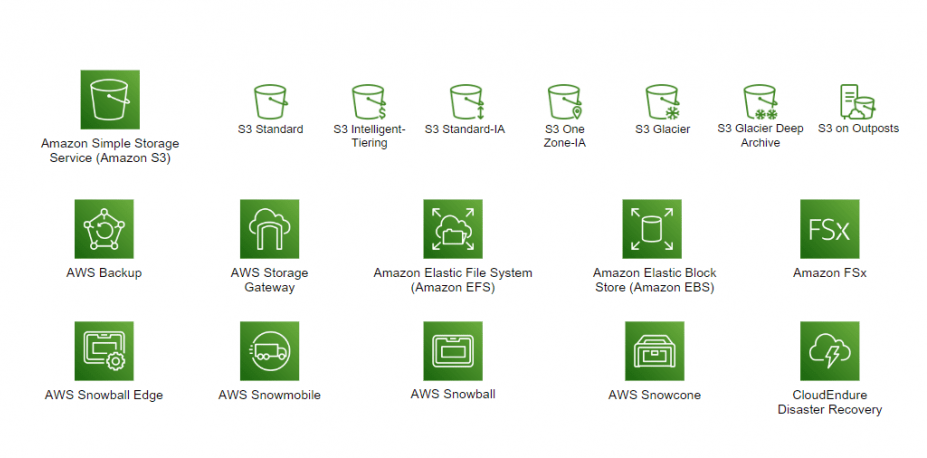Storage
AWS Storage is a suite of scalable, secure, and cost-effective cloud storage services offered by Amazon Web Services.
AWS Cloud Storage Services
At Operisoft, we understand that every business has unique storage and data management needs. That’s why we offer customized consulting services tailored to each client’s specific requirements. Our services cover design and implementation, migration, backup and recovery, and data management, ensuring that our clients can leverage the full potential of AWS storage services.

Operisoft has specialized certified professionals on storage services, including the team of the AWS Certified Advanced Networking – Specialty, which makes a combination of expert, who can cater any kind of storage requirements.
The team has advanced skills and knowledge in designing and deploying storage solutions on AWS:
- Hybrid storage stetup.
- Cloud to cloud backup [ ec2, rds other workloads to AWS s3 storage classes]
- AWS cloud to On premises
- DR setup from On premises to AWS cloud and vice-versa.
We help our clients in achieving the encryption on transit, at rest and make sure that the data is securely stored and transited.
RTO (Recovery Time Objective) and RPO (Recovery Point Objective) goals – depending upon our customer’s requirements to achieve the RTO and RPO in AWS Storage. As a customer, you need to consider your business requirements, application criticality, and cost considerations. RTO defines the maximum acceptable downtime for your application or service, while RPO defines the acceptable data loss in case of a disaster.

Define the right RTO and RPO Strategy:
- Understand your business requirements: Determine the criticality of your application or service. Identify the impact of downtime on your business operations, customer experience, revenue, and reputation. Consider any regulatory or compliance requirements that may affect your RTO and RPO.
- Assess your data: Determine the criticality of your data and how frequently it changes. Some data may require near real-time replication, while for other data, periodic backups may be sufficient. Identify the data sets that require the highest level of protection and prioritize them accordingly.
- Explore AWS storage options: AWS offers various storage services that can help you meet your RTO and RPO requirements. Some of the relevant services include Amazon S3 (Simple Storage Service), Amazon EBS (Elastic Block Store), Amazon Glacier, and AWS Backup. Each service has different characteristics in terms of durability, availability, and recovery options.
- Replication and backup strategies: Depending on your requirements, you can choose different replication and backup strategies. For lower RTO and RPO, you may consider using multi-region replication or Cross-Region Replication (CRR) for services like Amazon S3 or Amazon EBS. This ensures that your data is available in multiple geographically separate locations, reducing the risk of data loss.
- Utilize AWS backup services: AWS Backup provides a centralized backup management solution for various AWS services, including EBS volumes, RDS databases, DynamoDB tables, and more. It simplifies the backup process and allows you to define backup schedules, retention policies, and recovery workflows.
- Test your recovery procedures: Regularly test your recovery procedures to ensure they meet your RTO and RPO goals. Conduct simulated disaster recovery exercises to validate the effectiveness of your backup and restore processes. Identify any potential bottlenecks or issues and make necessary adjustments to improve your recovery capabilities.
- Cost considerations: Achieving lower RTO and RPO typically involves higher costs due to the need for additional resources and redundant infrastructure. Evaluate the cost implications of your chosen storage options and align them with your business requirements and budget constraints.
Benefits of archiving and backup in AWS
LOWEST COST CLOUD STORAGE
ZERO HARDWARE TO MANAGE
MEET COMPLIANCE REQUIREMENTS
DATA PROTECTION
BUSINESS AGILITY
UNLIMITED SCALE AND PAY-AS-YOU GO
Storage Services

Disaster Recovery:
Assess Your Current Disaster Recovery Plan
Team Operisoft can review your current disaster recovery plan (if you have one) and identify gaps and weaknesses in your strategy. We can evaluate your current infrastructure, processes, and procedures to determine if they are sufficient to recover your data and systems in the event of a disaster.
Identify Risks and Threats
We can help you identify potential risks and threats to your business, such as natural disasters, cyber-attacks, hardware failure, or human error. We provide recommendations on how to mitigate these risks and implement a comprehensive disaster recovery plan.
Recommend the Right Cloud Storage Solution:
Our storage experts can recommend the right cloud storage solution for your business based on your budget, data requirements, and disaster recovery needs. They can evaluate different cloud storage providers and their disaster recovery capabilities to ensure your data is protected and accessible at all times.
Develop a DR Plan
Our experts can help you develop a disaster recovery plan that includes detailed procedures for data backup, data recovery, and business continuity. We can work with you to establish recovery time objectives (RTOs) and recovery point objectives (RPOs) to ensure you can recover from a disaster as quickly and efficiently as possible.
Test and Update Your Plan:
We not only consultant but help you test and update your disaster recovery plan on a regular basis to ensure it remains effective and up-to-date. We conduct regular disaster recovery drills and simulations to identify potential issues and make necessary adjustments.
Define the right storage service:
Team Operisoft keeps below in mind while defining the right storage services for the customers:
Integration
Choose a provider that integrates with your existing systems and applications. This includes support for popular APIs and protocols, as well as the ability to easily move data between your on-premise and cloud environments.
Security
Security should be a top priority when choosing a cloud storage service. Look for a provider that offers encryption, strong access controls, and regular security updates.
Reliability
Look for a provider with a proven track record of high availability and uptime. You should also consider their disaster recovery and business continuity plans.
Scalibility
Choose a provider that can accommodate your changing storage needs over time. This includes the ability to easily increase or decrease storage capacity, as well as the ability to add new users as your organization grows.
Cost
Consider the total cost of ownership, including storage fees, transfer fees, and any other costs associated with using the service. Look for a provider that offers transparent pricing and the ability to easily calculate your costs.
ARTICLES ON STORAGE SERVICES
Case Study – Veeda Clinical Research
The customer into clinical research industry has a need of a solution for data backup and long term archival.
Case Study – Katyani Plastic
The customer is into manufacturing industries. Had a requirement of ERP/Tally Data backup which is critical
Case Study – Cardinal
The customer is into engineering and drafting services. Customer was looking for centralized file sharing solution.
Introducing Operisoft, your go-to resource for dependable AWS cloud consulting services. At Operisoft, we recognize how critical it is to maximize the potential of AWS storage services to streamline corporate processes and spur expansion. Our team’s proficiency and dedication to quality enable us to provide an extensive selection of AWS storage options that are customized to your particular business requirements.
Why Choose AWS Storage Services?
AWS provides a range of robust storage services that are intended to assist companies in safely managing, storing, and analyzing their data. The most dependable, scalable, and affordable of these services are Amazon EBS (Elastic Block Storage) and Amazon S3 (Simple Storage Service).
- Amazon S3 (Simple Storage Service): A scalable and extremely resilient storage system is offered by Amazon S3 for the storage and retrieval of any volume of data. High levels of availability and security are guaranteed by Amazon S3, which also offers an easy-to-use interface for managing and storing data.
- Amazon EBS (Elastic Block Storage): Block-level storage volumes from Amazon EBS can be connected to Amazon EC2 instances to give your apps persistent storage. With capabilities like encryption and snapshot backups, Amazon EBS offers the dependability and adaptability required to handle a variety of workloads.
Why Choose AWS Storage Services?
Partnering with Operisoft for AWS cloud consulting services offers several key advantages:
- Expert Advice: To help you optimize your AWS storage infrastructure for optimal performance and efficiency, our team of certified AWS cloud experts offers expert advice.
- Personalization: We provide individualized solutions that are suited to your particular demands and specifications because we recognize that every business is different.
- Reputable Partner: Operisoft has built a solid reputation as a reliable partner for companies aiming to take advantage of AWS storage services thanks to its many years of expertise in providing AWS cloud consulting services.
- Cost Efficiency: You can focus on expanding your business by taking advantage of the cost reductions and improved operational efficiency that come with utilizing AWS storage services.
Operisoft AWS Storage Services
At Operisoft, we offer a comprehensive range of AWS storage services to help you unlock the full potential of your data. Our services include:
- Planning and Execution of the Migration: We help to ensure a smooth transition with the least amount of disturbance to your company operations by assisting with the planning and execution of your data migration to AWS storage services.
- DevOps: You can provide new features and updates to your apps more quickly by streamlining your development and operations processes with the aid of our
- DevOps services: Data organization and accessibility for analysis and decision-making are what we assist you in achieving by streamlining your data administration and storage procedures.
- Monitorization: By giving you real-time access to your AWS storage infrastructure, our monitoring services enable you to see and fix problems before they hurt your company’s operations.
- Networking and Security: We put best practices for data protection and network security into practice, assisting you in protecting sensitive data and meeting legal obligations.
- DR and Continuity Planning: To guarantee company continuity in the case of unforeseen disruptions, we assist you in creating and implementing strong disaster recovery plans.
Partner with Operisoft Today
Are you prepared to use AWS storage services to their full potential for your company? For professional AWS cloud consulting services catered to your particular requirements, collaborate with Operisoft. Reach out to us right now to find out more about how we can support your success in the cloud.
